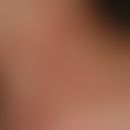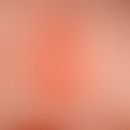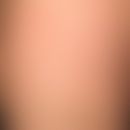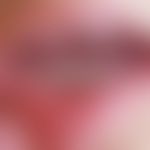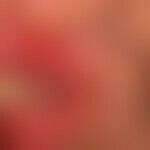Synonym(s)
HistoryThis section has been translated automatically.
DefinitionThis section has been translated automatically.
You might also be interested in
Occurrence/EpidemiologyThis section has been translated automatically.
In 10-50% of the population, mostly minor type.
EtiopathogenesisThis section has been translated automatically.
Unexplained, probably multifactorial triggering with corresponding disposition. Possible triggers are trauma, gastrointestinal disorders, hormonal influence (paramenstrual occurrence), infections, stress and food intolerances (nuts, more rarely tomatoes). One thinks of an immunological or autoimmunological malfunction with subsequent destruction of the epithelial cells. Familial accumulation.
ManifestationThis section has been translated automatically.
Usually begins between the ages of 20 and 30, but also in childhood (mean age of onset of the disease in children 9.6 years); the prevalence decreases with increasing age. Gynaecotropia exists.
LocalizationThis section has been translated automatically.
ClinicThis section has been translated automatically.
Typical is the recurrent occurrence over years (average duration of the disease is 3.6 years) (frequency of recurrences fluctuating between weeks and months) of single or several pinheads, rarely lenticular, or even 3.0-5.0 cm large, usually very painful erosions or ulcerations with a highly red rim in the area of the mucosa. More rarely, a small, quickly eroded, painful blister can be observed initially. The painfulness makes eating and drinking difficult (especially acidic fruit juices). Accompanying symptoms are increased salivation and foetuses ex ore.
A distinction is made between 3 types:
- Minor type (80%): Few erosions or flat ulcers; size: <0.3-05 cm; general symptoms.
- Major type (Type Sutton; 10%): Few, deep ulcers up to 3 cm in diameter, often regional lymphadenitis, moderate to high fever; general feeling of illness.
- Herpetiform aphthae (10%): Very numerous; size: < 0.3 cm; disseminated, erosions or flat ulcers; entire oral mucosa, similar to gingivostomatitis herpetica. Periodic course for years to decades. Short intervals without appearance.
HistologyThis section has been translated automatically.
General therapyThis section has been translated automatically.
Notice! In case of large, constantly recurring aphthae, think of M. Behçet or M. Crohn
! Foods or substances which intensify the symptoms should be avoided, especially foods which cause burning, such as spices, acids, fruit juices, alcohol. Foods that irritate the mucous membrane mechanically, such as hard rusks, rolls, etc., should also be handled with care. Sparing use or avoidance of mouthwashes and toothpastes.External therapyThis section has been translated automatically.
Disinfection: Mouth rinses initially with disinfecting solutions such as chlorhexidine R045, hexetidine (e.g. Hexoral solution), ethacridine lactate (e.g. 0.25% ethacridine lactate monohydrate solution with lidocaine 0.5%, dequalinium chloride (e.g. Maltyl solution).
Pain relief: In case of severe pain, mouth rinses with aqueous solutions containing benzocaine (e.g. Dolo-Dobendan solution) can be used. Combination preparations of 0.1% benzalkonium chloride/2% lidocaine (e.g. Dynexan A gel) applied several times to the painful lesions or ethacridine lactate/lidocaine solutions (e.g. 0.25% ethacridine lactate monohydrate solution with lidocaine 0.5%) show good results .
Supplementary glucocorticoid adhesive pastes or gels are indicated for extensive aphthae, which are applied to the lesion after dry dabbing with a cotton swab.
Alternatively, "mice" (gauze swabs) containing medium- to high-potency topical glucocorticoids (e.g., clobegal cream) can be applied to the aphtae for approximately 30 minutes. Betamethasone valerate adhesive paste 0.1% R031 or prednisolone paste (e.g., Dontisolon D oral healing paste) are most suitable because of the longer time spent on the lesion.
Alternatively, oral gels whose vehicle systems function in the sense of adhesive ointments are applicable, e.g., 0.1% triamcinolone acetonide gel(e.g., Volon A adhesive ointment). Rinses with glucocorticoids (e.g., dissolve 1 tbl. prednisone 50 mg in 20 ml aqua purificata; rinse the mouth with the solution for 5 min, do not swallow!) are common but not very effective (dilution effect by saliva, short residence time at the lesion). In the further course, mouth rinses that promote healing, such as dexpanthenol solution, can be applied as a supportive measure. See below Stomatologics.
Alternative: local tetracycline therapy (e.g. mouth rinses 4 times/day for 3-5 minutes with a solution of 300 mg doxycycline in 30 ml distilled water). For deep severely painful aphthae, a glucocorticoid may be added (e.g., 20 mg prednisolone).
Internal therapyThis section has been translated automatically.
- In the case of menstruation-dependent aphthosis, an estrogen-emphasized contraception can be useful.
- Interval-type therapy with glucocorticoids (20-50 mg/day prednisolone p.o. in the acute phase)
- Long-term therapy with DADPS (50 mg/day p.o.) shows an improvement in symptoms in individual cases.
- The use of colchicine should be considered for the major type in exceptional cases (1-2 times/day 0.6 mg p.o.).
- Thalidomide (non-approved experimental approach) shows (as in Behçet's disease) good efficacy in some patients (100-300 mg/day p.o.).
NaturopathyThis section has been translated automatically.
Tanning drugs: Tanning drugs have anitinflammatory, weak antimicrobial and wound-healing effect. The lesions can be brushed several times a day with an undiluted tincture of sage or tormentil. Alternatively, a tincture of rhatania roots is suitable.
Essential oil drugs: the essential oil drugs such as clove oil, chamomile flowers (camillosan solution), myrrh (10% myrrh tincture), sage leaves (aqueous solution with 1-5% sage leaf oil) and thyme herb (10% thyme tincture) have antibacterial, virustatic, antifungal and sometimes local antiphlogistic effects. They are well suited as "alternative therapy" for habitual aphthae.
Alternatively, combinations are also suitable: (see below Tormentill-Myrrhe astringent (NRF 7.1.)
LiteratureThis section has been translated automatically.
Belenguer-Guallar I et al (2014)Treatment of recurrent aphthous stomatitis. A literature review. J Clin Exp Dent 6e:168-174
- Gürkan A et al (2015) Recurrent Aphthous Stomatitis in Childhood and Adolescence: A Single-Center Experience.
Pediatric Dermatol doi: 10.1111/pde.12577 - Heberden W (1802) Commentaries on the History and Cure of Diseases. T. Payne (ed.), London
- Sutton RL (1911) Pariadenitis mucosa necrotica recurrens. J Cutan Dis 29: 65-71
- by Mikulicz-Radecki J, Caraway WF (1898) The diseases of the mouth. In: The diseases of the mouth. Gustav Fischer, Jena
Outgoing links (16)
Behçet's disease; Betamethasone valerate adhesive paste 0.1% (nrf 7.11.); Chlorhexidine mouth rinse solution 0.1 or 0.2% (nrf 7.2.); Colchicine; Crohn disease, skin alterations; Dadps; Dexpanthenol; Ethacridine lactate; Ethacridine lactate monohydrate solution 0,25% with lidocaine 0,5% (nrf 7.7.); Gingivostomatitis herpetica; ... Show allDisclaimer
Please ask your physician for a reliable diagnosis. This website is only meant as a reference.
